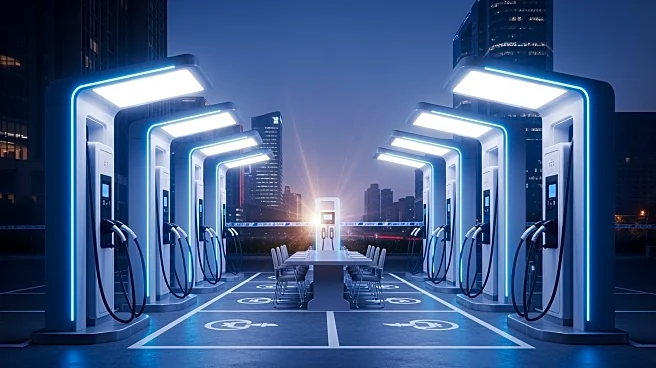What's Happening?
General Motors (GM) is set to lay off approximately 1,700 workers at its manufacturing plants located in Michigan and Ohio. This decision comes as the company faces a decline in demand for electric vehicles
(EVs). The layoffs are part of GM's strategy to adjust its operations in response to the changing market dynamics. The affected workers are employed at various sites where GM produces its EV models, which have seen a slowdown in consumer interest. This move reflects the broader challenges faced by the automotive industry as it navigates the transition from traditional combustion engines to electric powertrains.
Why It's Important?
The layoffs at GM highlight significant challenges within the automotive industry, particularly concerning the adoption of electric vehicles. As one of the largest automakers in the U.S., GM's decision to reduce its workforce underscores the volatility in EV demand, which can impact the company's financial performance and strategic direction. This development may influence other automakers to reassess their production strategies and workforce needs. Additionally, the layoffs could have economic repercussions in the regions where these plants are located, affecting local communities and suppliers dependent on GM's operations.
What's Next?
GM may need to explore alternative strategies to boost EV demand, such as enhancing marketing efforts or offering incentives to consumers. The company might also consider adjusting its production schedules or investing in new technologies to make EVs more appealing. Stakeholders, including local governments and labor unions, are likely to engage with GM to address the impact of these layoffs and seek solutions to support affected workers. The broader automotive industry will be watching closely to see how GM navigates these challenges and whether similar actions will be taken by other manufacturers.
Beyond the Headlines
The layoffs at GM could prompt discussions about the sustainability and future of the EV market in the U.S. As automakers invest heavily in electric technology, the fluctuating demand raises questions about consumer readiness and infrastructure support for EVs. This situation may lead to policy debates on how to better facilitate the transition to electric vehicles, including potential government interventions or incentives to stimulate market growth.













